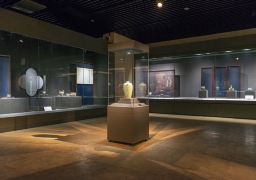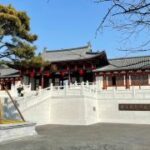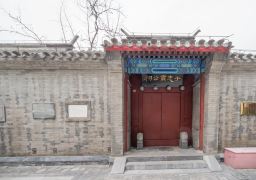The Southern Song Guan Kiln Museum is located on the east side of Bagua Field. It is a theme museum established based on the Southern Song kiln site.

Overview of the official museum: After the expansion in recent years, the environment of the museum has improved a lot. Several single-family buildings under the shade of trees are very delicate. The main exhibitions of official kiln porcelain are concentrated in several exhibition halls along Nanfu Road on the west side, including the exhibition of historical relics of the Southern Song Guan Kiln and the exhibition of Chinese ceramic culture. The pottery art center is also here. The site of the lower official kiln at Jiaotan in the Southern Song Dynasty is in the northeast. The several venues on the south side are about the display of Southern Song culture and an experience hall related to ceramics. The entire museum area is not too large. Usually, people walk and play clockwise.
Highlights of the exhibition hall: Entering the exhibition hall of historical relics of the official kiln, you will be greeted by a stone engraved with ‘Hometown of Celadon’. The transparent glass on the ground under your feet is covered with ceramic fragments. The types of exhibits are very complete.
Here, you can not only appreciate exquisite Southern Song celadon and view the official kiln site, but also have fun making pottery by yourself. The museum has good greenery and not many tourists. It is like a small park and is very suitable for bringing children to play.In the Southern Song Dynasty, the imperial palace made extensive use of celadon and civilian porcelain. Alongside these, there were numerous intriguing porcelain novelties. A prime example is the Southern Song Guan Kiln’s duck-shaped incense burner, which features an endearing little yellow duck design. The exhibition hall not only displays these artifacts but also offers engaging experience projects tailored for children. These include the opportunity to emulate archaeologists in reassembling shattered porcelain vases and exploring ancient porcelain culture through interactive touch computers.
Adjacent to the exhibition hall, a pottery art center invites visitors to indulge in pottery-making activities (for an additional fee). Here, one can experiment with various techniques such as pottery wheel throwing, polymer clay, and kneading. Additionally, there is the chance to dabble in painting and savor the unique sensation of applying brushstrokes to pristine white porcelain.
To visit the site of the lower official kiln at Jiaotan, exit the exhibition hall and head northeast. Beyond a wall adorned with ivy, you will discover the historical site, which comprises workshops and dragon kilns. Over 800 years ago, this was the birthplace of countless exquisite porcelain pieces. Today, the site features restoration models that offer a visual representation of the layout of the official kiln’s porcelain workshops and the production processes involved, such as trimming, drying, and glazing. The most striking feature is undoubtedly the dragon kiln site, where the elongated kiln structure ascends the terrain in a dramatic and impressive manner.Walking up the steps beside the kiln, one can almost feel the scene of the prosperous kiln fires from the past. This experience is a prelude to your visit to the Southern Song History Exhibition Hall, located on the south side. The hall offers a comprehensive display of Southern Song history, covering everything from multiplication tables to the suspended compass method, giving you a broad overview of the era.
After your museum tour, continue your journey to the Bagua Field Ruins Park on the west. Not far from there, you’ll find the Jiangyangfan Ecological Park, which is often visited in conjunction with the museum.
The museum is open all year round, with operating hours from 08:30 to 16:30 on Mondays, Wednesdays through Sundays.
A must-see tip: Ceramic works created in the pottery art center, except for those that are painted, cannot be taken away immediately. You will need to wait for the firing process to be completed before returning to the museum to collect your creations.









